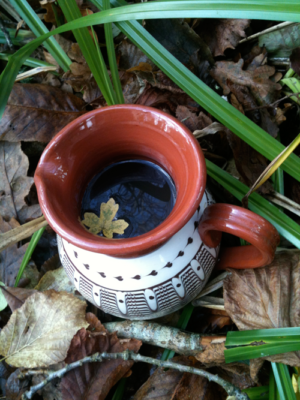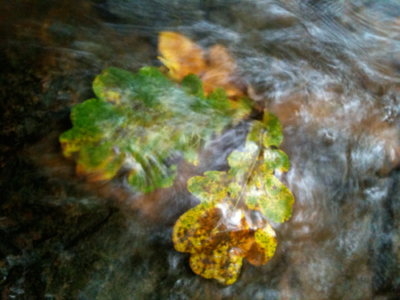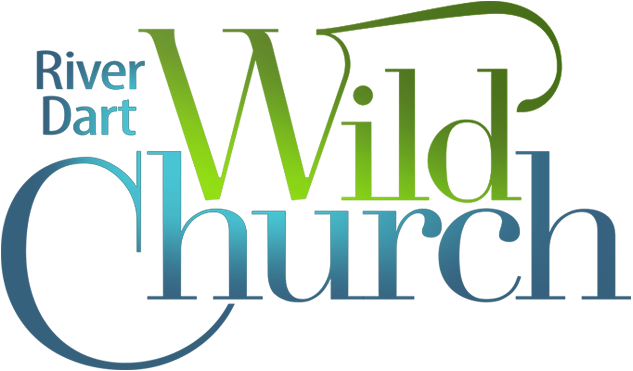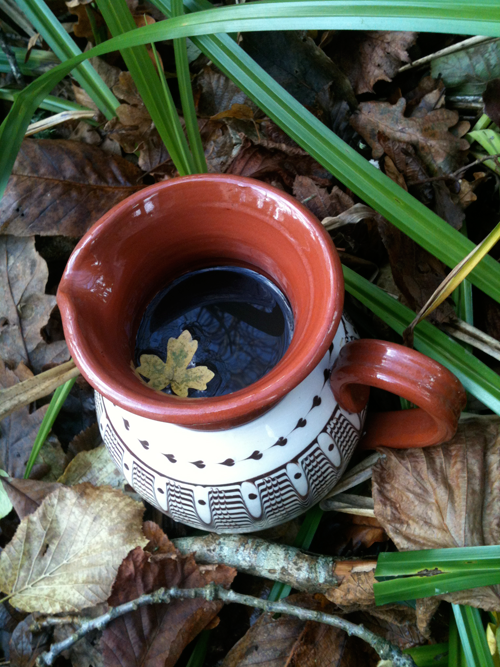I love working with and supporting all the Wild Church collaborators… and yet it is also a bit of a treat when I get to guide a pilgrimage completely in my own way! So this was a special Sunday for me and especially as, after four years of co-ordinating Wild Church events, I will be taking a break in 2019 in order to focus on research and writing. There are so many memories stirred for me in arriving early at St. Mary’s in Dartington and setting out a circle of chairs on the stone flags in front of the beautiful rood screen; the cool stone, carved wooden birds and berries and the autumn sun shining through stained glass windows around the altar are all part of my recurring sense of coming into a holy space, both inwardly and outwardly. So as our circle of pilgrims gathered and settled into silence together, my thoughts turned to what this word ‘holy’ might mean.

There are old English and European roots to ‘holy’ that mean whole, healthy or health giving. This may have resonance for many in the Dartington and Totnes area, who have a holistic understanding of life (that all is part of an interconnected whole) and who try to live in ways that respect this. So ecological choices are literally part of living a holy life. Another root for ‘holy’ is the Hebrew word ‘kadosh’ which means ‘other’ or ‘set apart’. This may seem quite a different perspective from the inclusivity of seeing all life as a whole, but perhaps it also a good reminder of the importance of treating the ‘other’ with love and respect and having times and places that are set apart, to enable this mindfulness to awaken within us. A church is a good example, in that it embodies a journey of awareness, inviting us to step from our habitual places and ways of thinking and acting and awaken to the sacred. The grass in a churchyard, the stones of the building, the people in the congregation are at one level quite ordinary and perhaps may be hard to relate to or seem like a burden at times, but in ‘being church’ they are set apart for a time and in participating in church (be it traditional or wild) we are challenged to see and appreciate each other more fully. During a communion service, there is both an outer and an inner journey – we move together from the body of the church to the most holy place at the altar, where we enter into communion with the divine. Setting apart this sacred time and space, can enable a shift of consciousness, an awakening of awe and wonder that can indeed transform how we see the whole of life.

It was in this spirit that I wanted to guide this particular pilgrimage and to invite each of us pilgrims to meet the ordinary, often overlooked and sometimes unknown and unnamed local brooks and rivulets, and so to awaken to their natural holiness. In our celebrity orientated culture, it’s tempting to focus on what is well known or seemingly impressive. But at every level of life there can be a hidden multitude that are equally worthy of appreciation. I love the River Dart and yet most of my everyday walks around Dartington meet instead the tiny streams whose waters feed into the larger river. These small waterways are the lifeblood of the land, they are the sanctuaries and pathways of a myriad of creatures and they themselves are fed by hidden springs, boggy patches and drainage ditches – all often overlooked and unappreciated – perhaps even clogged at times with rubbish or culverted to make way for roads and buildings, such that it’s often hard to trace the flows.
So this was the invitation for our afternoon – simply to walk in silence and wend our way around the local footpaths, on the little ways that connect up different parts of the community and where hidden holy waters are often present. So we wandered and wondered, mostly moving, sometimes pausing and without any words, no matter how beautiful, No deep reflections, or poetry, but simply being present with the whole of being here, in the hidden holiness of this place.

